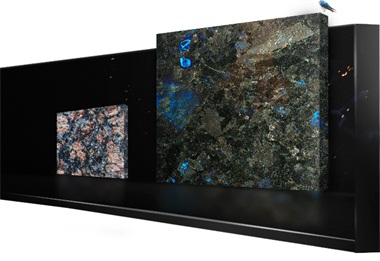- All
- Product Name
- Product Keyword
- Product Model
- Product Summary
- Product Description
- Multi Field Search

Views: 3 Author: Site Editor Publish Time: 2025-08-14 Origin: Site
Marble, granite, and quartz are three materials frequently used for kitchen and bathroom countertops. Two are natural, one is artificial, but with today’s manufacturing technology it can be nearly impossible to spot the difference with the naked eye.
Marble
Marble is one of the most elegant natural stones in the world. For centuries, it has been used to construct palaces fit for kings and statues dedicated to gods. If marble stone is free from all impurities, it will be solid white. Most marble, however, contains other minerals that can make it bluish, gray, pink, yellow, or black. However, these colors won’t be stark. Any other bright and vibrant colors likely indicate that the marble is human-made or that it’s a natural stone mixed with other materials.
True marble also has an unparalleled glossiness. This is often replicated in synthetic stones by adding small bits of glass and other materials, but it does not carry the same lasting shine of marble.
Granite
Another natural stone that’s popular for countertops, Granite, has also been used for thousands of years in buildings, bridges, and monuments. Mount Rushmore, the famous sculpture of U.S. Presidents George Washington, Thomas Jefferson, Theodore Roosevelt, and Abraham Lincoln, is sculpted in a granite outcrop in the hills of South Dakota. Because it contains an assortment of different minerals like feldspar, quartz, and mica, granite can come in many colors, but the most common ones are whites, grays, reds, and browns.
Some granite has more of a veined look, similar to marble, but if you look closely, the color patches tend to be grainier and blurrier, rather than distinct streaks. Unlike marble, granite is completely opaque, so you will only see the outermost layer of the surface.
Again, testing granite’s hardness by cutting it with a knife is another way to determine whether you are looking at granite or marble. However, telling the difference between granite and quartz takes a bit more of a keen eye since neither will scratch.
Quartz
While quartz occurs naturally, a quartz countertop is human-made. Quartz countertops are engineered to be one of the most durable options available on the market today. Composed of about 90% natural quartz crystals mixed with resins and pigments, quartz countertops are not only stunning but also incredibly tough. The resin binds the quartz particles together, creating a material that is harder and more resilient than natural stone, like marble. In fact, quartz ranks high on the Mohs hardness scale, meaning it’s very resistant to scratches and chips from everyday use.
Quartz countertops come in a seemingly endless variety of colors and patterns. To tell if you are looking at real stone or a manufactured countertop, look carefully at the pattern on the counter.
Every slab of granite or marble is unique. If it is natural stone, no two areas of the stone will look exactly alike. Because quartz slabs are manufactured, they tend to have a fairly uniform color and consistency throughout, with little variation in the patterns and textures.
